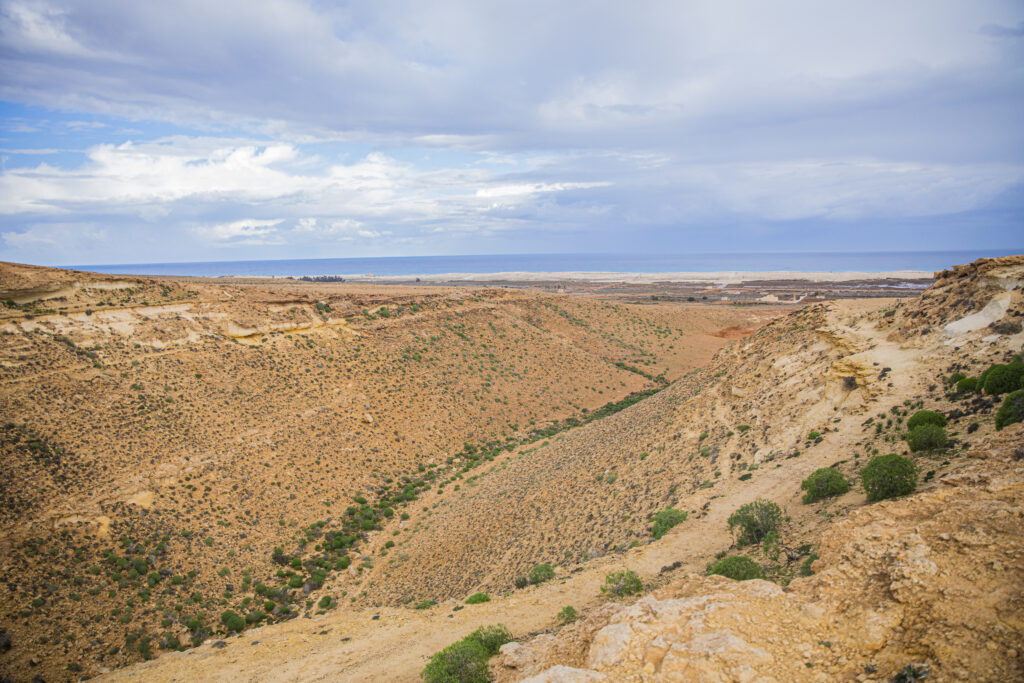Water Resources and Desert lands Division

Main Objectives:
- Geological survey to identify rock and geomorphology units, in addition to sedimentary and structural basins.
- Exploring the presence of groundwater, determining the thickness and the depth of underground aquifers, determining the depth and locations of drilling, and designing wells.
- Evaluating and managing water in underground reservoirs, assessing the amount of water, determining safe withdrawal from wells and optimal utilization of water.
- Evaluating and monitoring water quality and setting programmes to protect water resources from pollution.
- Proposing water harvesting systems for the development of rain-fed crops.
- Studying the origin and processes of formation and evaluation of desert lands, drawing the foundations for their exploitation, and determining priorities of reclamation.
- Studying and evaluating chemical, natural and mineral properties of soils, and the relationship of soil and plants to water, with studying the effect of mineral composition on soil properties.
- Evaluating soil fertility and its fertilizing needs, introducing bio-organic farming systems, recycling agricultural and organic wastes, producing vital vaccines, bio fertilization and biopesticides for disease resistance for field crops, vegetables and medicinal plants in the new lands.
- Managing land resources and using agricultural mechanization in desert lands, studying the factors of soil erosion and deteriorating productivity, developing means to reduce erosion and deterioration, and managing irrigation and drainage systems under desert conditions.
The division consists of nine scientific departments, and each division consists of a number of research units:
- Geology Department:
- Geomorphology & landsat Unit.
- Field Geology Unit.
- Sedimentary Rocks Unit.
- Ground Water geology Unit.
- Well Drillings Unit.
- Hydrology Department:
- Surface hydrology Unit.
- Groundwater hydrology Unit.
- Mathematical Modeling Unit.
- Geophysical Exploration Department:
- Resistivity vertical & horizontal Unit.
- Magnetic Unit.
- Well Logging Unit.
- Electro-magnetic Unit.
- Seismic Unit.
- Hydrogeochemistry Department:
- Water chemistry Unit.
- Water Pollution Unit.
- Water Desalination Unit.
- Environment Isotopes Unit.
- Pedology Department
- Soil Survey & Classification Unit.
- Land use and Evaluation Unit.
- Soil Physics and Chemistry Department:
- Soil Chemistry Unit.
- Soil Mineralogy Unit.
- Soil Physics Unit.
- Water Requirement and Meteorology Unit.
- Soil Fertility and Microbiology Department
- Soil Fertility Unit.
- Soil Microbiology Unit.
- Plant Nutrition Unit.
- Soil Conservation Department
- Soil Erosion Unit.
- Irrigation & Drainage Unit.
- Water harvesting & Water Distribution Unit.
- Agricultural Mechanization Unit.
- Soil Conditioners & their Economics Unit.
- New and Renewable Energy Department:
- Solar Energy Unit.
- Wind power Unit.
- Geothermal Energy Unit.
- Wave energy Unit.

